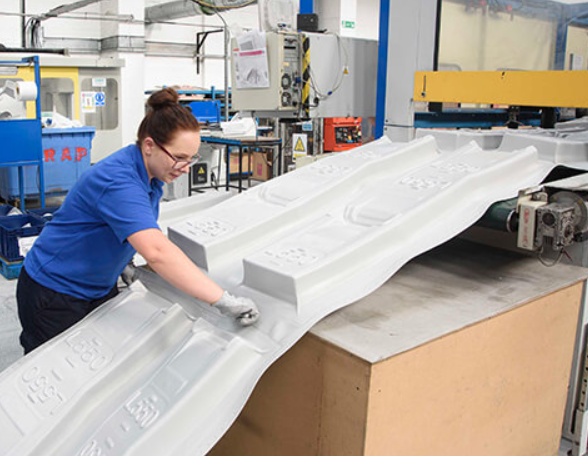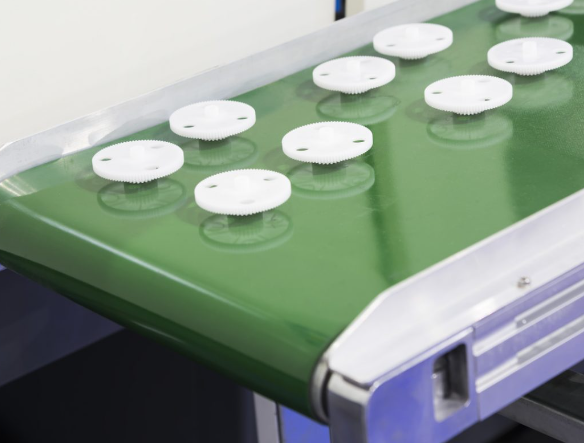Factors Affecting Vacuum Forming Duration
Vacuum forming, a versatile process in manufacturing, involves shaping plastic by heating and applying suction to fit a mold. The duration of this process can vary significantly based on several key factors.
Material Selection and Its Impact
Material choice plays a crucial role in vacuum forming time. Different materials have distinct heating requirements and behavioral characteristics. For example, acrylic heats quickly but requires careful handling to avoid bubbles and imperfections. In contrast, ABS plastic is more forgiving but takes longer to reach the optimal forming temperature. The thickness of the material also affects the time; thicker sheets take longer to heat thoroughly. It’s essential to balance material properties with project needs to optimize efficiency and quality. Refer to the Material Selection Guide for more details on various plastics.

Mold Design and Complexity
The complexity of the mold design directly influences vacuum forming duration. Simple molds with fewer details can be formed faster than intricate molds with multiple levels or intricate textures. Additionally, the material used for the mold, such as aluminum or wood, impacts the heating phase. Aluminum molds conduct heat more efficiently, reducing overall cycle time. Mold design must consider not just the aesthetic but also its impact on the process’s time efficiency.
Temperature and Heating Time
The temperature setting and heating time are critical in determining how long the vacuum forming process takes. If the temperature is too low, the plastic won’t form properly, leading to defects and rework. Conversely, overheating can cause degradation of the material, affecting quality and potentially increasing waste. Finding the optimal temperature for each material is vital for time efficiency and product quality. For instance, polystyrene might require a lower temperature setting compared to more heat-resistant materials like polycarbonate. Understanding the thermal properties of materials is essential to streamline this process.
Vacuum Forming Process Steps
Vacuum forming is a streamlined yet intricate process that transforms a flat sheet of plastic into a three-dimensional object. This process involves specific steps, each contributing to the final product’s quality and efficiency.
Preheating Phase
Heating the plastic sheet is the first critical step. This phase involves raising the temperature of the plastic to make it pliable enough for forming. The heating time varies based on the material type and thickness. For instance, a 0.5mm thick sheet of High Impact Polystyrene (HIPS) typically requires about 10 seconds per side to reach the ideal forming temperature, while thicker sheets or different materials like polycarbonate may require more time. Uniform heating is crucial to ensure consistent forming and minimize defects.
Forming and Vacuum Application
Once the plastic reaches the optimal temperature, it’s time for forming. In this step, the heated sheet is swiftly placed over the mold. Then, a vacuum is applied, sucking the sheet down onto the mold’s surface. The speed and pressure of the vacuum play a vital role in defining the clarity and definition of the final product. Applying the vacuum rapidly ensures that the plastic forms into the mold’s shape before it cools down, which is essential for intricate designs.
Cooling and Release
After the plastic has conformed to the mold, the cooling phase begins. Cooling solidifies the plastic, retaining the shape of the mold. This step’s duration depends on the material’s thickness and the mold’s material. For example, aluminum molds dissipate heat faster than wooden molds, reducing cooling time. Once the plastic is adequately cooled, which might take a few minutes, the vacuum is released, and the newly formed product is removed from the mold. Proper cooling ensures that the product maintains its shape and does not warp when removed.
Time Management in Vacuum Forming
Effective time management in vacuum forming is crucial for enhancing productivity and reducing costs. By implementing specific techniques and overcoming common challenges, the vacuum forming process can become more efficient and cost-effective.
Techniques for Efficient Vacuum Forming
- Optimize Material Preparation: Pre-cutting materials to the exact size needed for the mold can significantly reduce preparation time.
- Automate the Heating Process: Using automated systems to control the heating time and temperature can improve consistency and reduce manual oversight.
- Implement Rapid Cooling Systems: Incorporating cooling systems, such as forced air or water cooling, can expedite the cooling phase, allowing for faster release of the formed product.
- Use Multiple Molds Simultaneously: If space and equipment allow, using multiple molds at once can increase output without increasing individual cycle times.
- Regular Maintenance: Regular maintenance of equipment ensures optimal performance, preventing downtime due to mechanical failures.
Common Time-Related Challenges
- Material Heating Variability: Different materials require different heating times and temperatures. For instance, a 1mm thick polycarbonate sheet might need to be heated for around 50 seconds, while a similar thickness of ABS could require only 40 seconds.
- Mold Complexity: Complex molds with intricate details or undercuts can increase forming time, as they require careful handling and potentially slower forming speeds.
- Temperature Fluctuations: Maintaining a consistent temperature is crucial. Fluctuations can lead to increased cycle times and potential defects in the formed products.
- Efficiency vs. Quality Trade-Off: Balancing the speed of production with the quality of the end product is a constant challenge. Faster cycles might reduce quality, while focusing solely on quality can decrease output.
Analyzing Duration for Different Materials
In vacuum forming, the choice of material significantly impacts the overall duration of the process. Different materials exhibit distinct properties, affecting heating, forming, and cooling times.
Comparison of Forming Times
Below is a comparative table showcasing the forming times for various materials commonly used in vacuum forming:
| Material | Thickness (mm) | Heating Time (sec) | Forming Time (sec) | Cooling Time (min) | Total Cycle Time (min) |
|---|---|---|---|---|---|
| ABS | 1 | 40 | 30 | 3 | 4.17 |
| Polycarbonate | 1 | 50 | 35 | 4 | 5.42 |
| High Impact PS | 0.5 | 10 | 20 | 2 | 2.50 |
| Acrylic | 1 | 60 | 40 | 5 | 7.17 |
Note: The times are approximate and can vary based on specific conditions and equipment used.
Case Studies: Material-Specific Timelines
- ABS Plastic: Known for its robustness and flexibility, ABS typically requires around 40 seconds for heating a 1mm sheet. The forming process takes about 30 seconds, and the cooling phase lasts approximately 3 minutes. The total cycle time for ABS is roughly 4.17 minutes.
- Polycarbonate: This material, noted for its impact resistance and clarity, takes longer to heat, approximately 50 seconds for a 1mm sheet. Forming takes about 35 seconds, and cooling can take up to 4 minutes. The total cycle time for polycarbonate is around 5.42 minutes.
- High Impact Polystyrene (HIPS): A popular choice for lightweight applications, a 0.5mm thick sheet of HIPS can be heated in about 10 seconds. The forming time is around 20 seconds, with a relatively short cooling time of 2 minutes, leading to a total cycle time of 2.5 minutes.
- Acrylic: Known for its clarity and hardness, acrylic requires a longer heating time of 60 seconds for a 1mm sheet. The forming time is around 40 seconds, and the cooling phase can extend up to 5 minutes, bringing the total cycle time to approximately 7.17 minutes.

Optimizing the Vacuum Forming Process
Optimizing the vacuum forming process is crucial for enhancing efficiency, reducing costs, and improving product quality. Advanced technologies and process improvements play a significant role in achieving these objectives.
Advanced Technologies and Automation
Integrating Cutting-edge Software: Utilizing CAD and CAM systems for mold design and machine operation streamlines the entire process, from design to production.
Automation of the Heating and Cooling Systems: Automated temperature control ensures consistent heating and cooling, which is critical for maintaining product quality and reducing cycle times.
Robotics for Material Handling: Incorporating robotics for loading and unloading materials can significantly reduce manual labor and increase the speed of the overall process.
Real-time Monitoring Systems: Implementing sensors and monitoring systems helps in tracking the process, identifying any deviations in real-time, and making adjustments promptly.
Process Improvements for Time Reduction
Standardizing Operating Procedures: Establishing clear and efficient standard operating procedures minimizes errors and downtime, ensuring a smooth and speedy process.
Optimizing Mold Design: Designing molds with considerations for heat transfer and ease of forming can significantly reduce cycle times without compromising the quality.
Material Pre-treatment: Pre-treating materials, such as pre-heating or conditioning, can reduce the time taken in the actual forming process.
Regular Training for Operators: Continuous training and development of staff ensure that they are up-to-date with the latest techniques and can operate machinery at peak efficiency.




